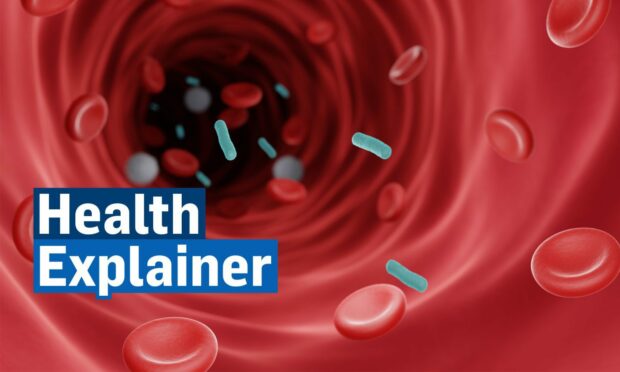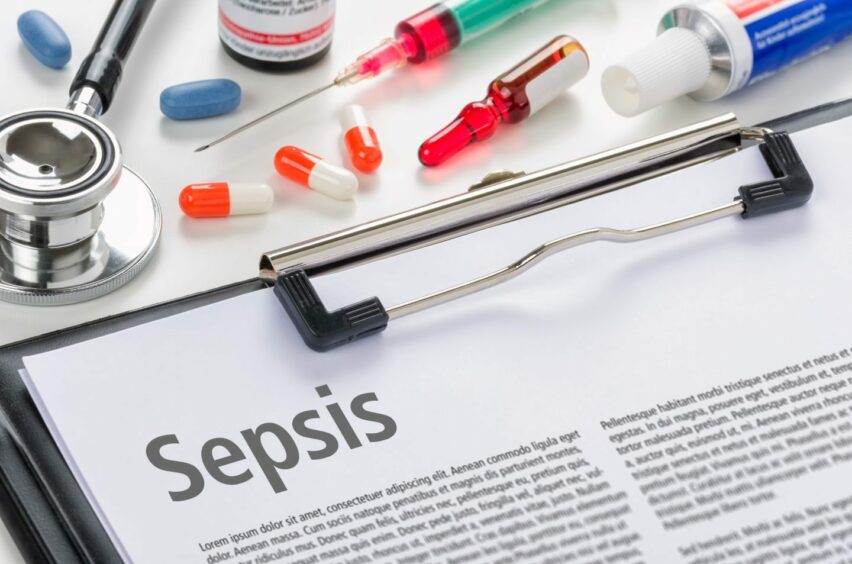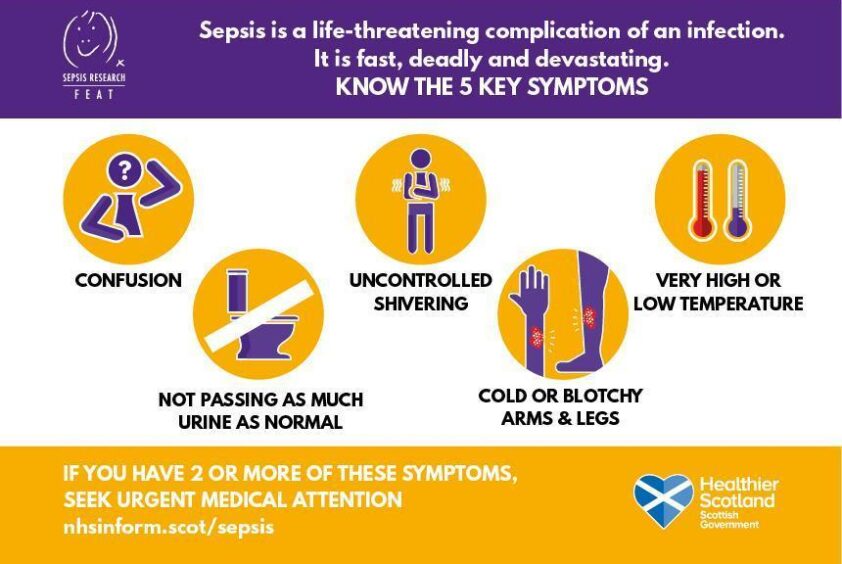Sepsis is a dangerous health complication that can be deadly if not spotted early on. But knowing the symptoms could save your or someone else’s life.
In Scotland, an estimated 4,000 people die from sepsis every year, meaning it claims more lives than breast, bowel and prostate cancer combined.
So, what actually is sepsis? What are the signs and symptoms? Do these differ for children? And who is most at risk of developing it?
We’re answering all your questions about the condition, to mark World Sepsis Day.
What is sepsis?
Sepsis is a life-threatening reaction to an infection.
It develops when your immune system overreacts to an infection and starts to damage your body’s own tissues and organs.
It is a rare but serious complication and without quick treatment, it can lead to multiple organ failure and death.
Sepsis can be triggered by an infection in any part of the body. The most common sites of infection leading to sepsis are the lungs, urinary tract, abdomen and pelvis.
Who is most at risk of sepsis?
Anyone can develop sepsis, however certain groups are more likely to develop it than others, including people who:
- are very young or very old
- are pregnant
- have had a urinary catheter fitted
- have a long-term health condition like diabetes
- have recently had surgery
- have wounds or injuries as a result of an accident
- have a medical condition that weakens the immune system – like HIV or leukaemia
- are receiving medical treatment that weakens the immune system – like chemotherapy or long-term steroids
What are the symptoms of sepsis?
Sepsis symptoms vary depending on age. In adults and older children, early signs of sepsis can include a fever, chills and shivering, a fast heartbeat and fast breathing.
In some cases, symptoms of more severe sepsis or septic shock (when your blood pressure drops to a dangerously low level) develop. These can include:
- feeling dizzy or faint
- a change in mental state – like confusion or disorientation
- diarrhoea
- nausea and vomiting
- slurred speech
- severe muscle pain
- severe breathlessness
- less urine production than normal
- cold, clammy and pale or mottled skin
- loss of consciousness
Sepsis can affect adults and children so it’s also important to know the symptoms for infants and pre-school children.
Symptoms in children under five years old
- a temperature below 36°C or above 38°C
- difficulty breathing
- struggling to speak normally
- no interest in eating or drinking
- black, green or bloody vomit
- a soft spot on a baby’s head that bulges
- “sunken” eyes
- a baby that’s floppy
- unresponsive
- stiffness in the neck, especially when trying to look up or down
- not had a wee or wet nappy for 12 hours
You should always phone 999 or go to A&E immediately if you think you or someone else is developing sepsis. Doing so could be life saving.
What is the treatment for sepsis?
Treatment for sepsis varies, depending on the cause of the infection, organs affected and extent of damage to the body.
The main treatment for sepsis at any stage is antibiotics which are given intravenously – directly into the vein This should be delivered within hours of diagnosis.
Antibiotic tablets should then replace the intravenous medication and will be taken for up to 10 days, depending on the severity of the condition.
The source of the infection causing the sepsis, such as an abscess or infected wound, will also be treated.
- Find more information about sepsis from Sepsis Research Feat, a charity founded by a Perthshire man.













Conversation